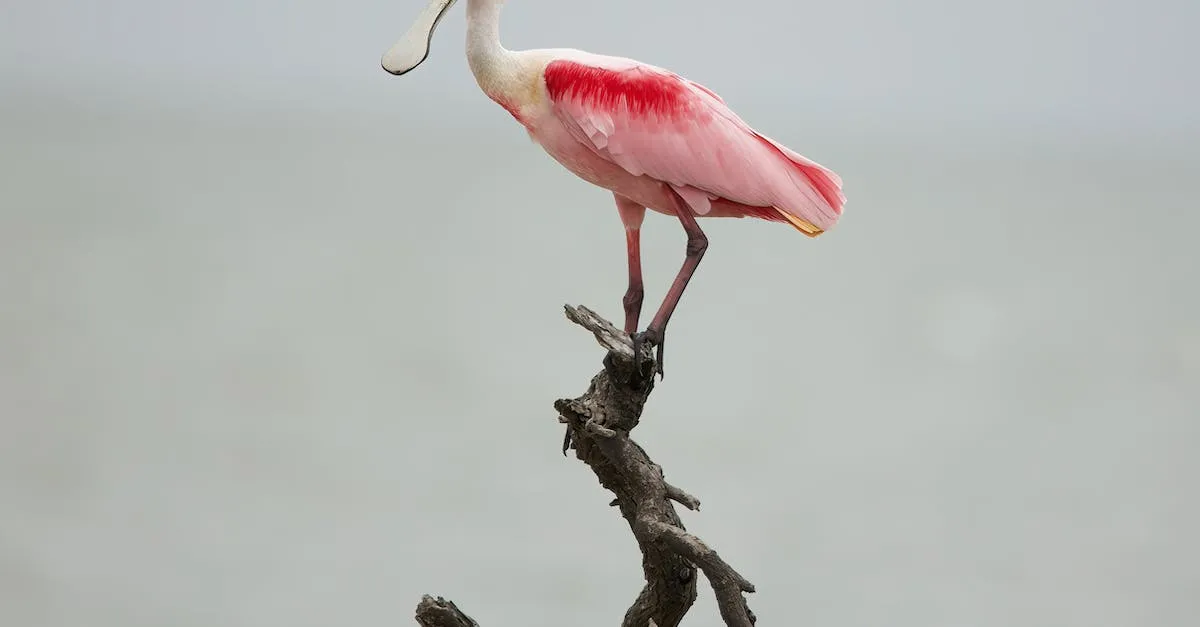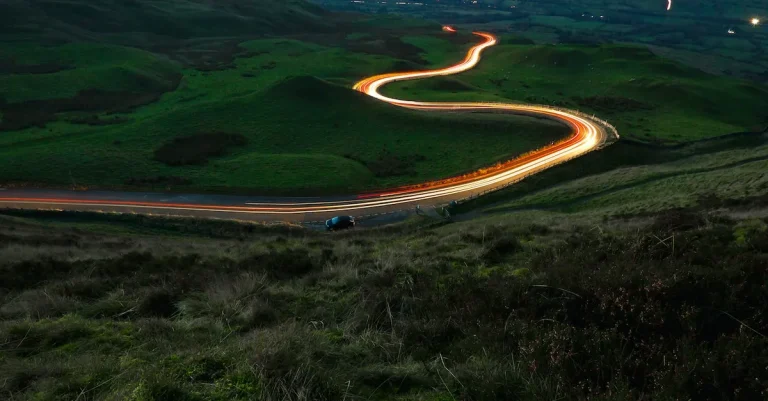Discover The Amazing Wildlife That Calls Austin, Texas Home
Austin, the capital of Texas, is well-known for its vibrant music scene, renowned barbecue joints, and being home to the University of Texas. But did you know that Austin is also home to some incredible wildlife species that thrive in the city’s various green spaces and waterways?
If you’re short on time, here’s a quick answer to your question: Austin is home to over 300 bird species, 90 mammal species, and over 1,000 plant species, many of which can be easily spotted around Lady Bird Lake, Zilker Park, Barton Springs Pool, and other natural areas throughout the city.
In this comprehensive guide, we’ll highlight the most common and exciting wildlife species that call Austin home. You’ll learn all about the birds, mammals, reptiles, amphibians, fish, and plants that inhabit Austin’s urban areas as well as surrounding hill country. From vivid wildflowers to soaring raptors, discover the amazing diversity of wildlife in Austin, Texas!
Birds
Austin, Texas is not just known for its vibrant music scene and delicious food, but also for its incredible wildlife. One of the most fascinating aspects of Austin’s wildlife is its diverse bird population.
With its diverse habitats and favorable climate, Austin attracts a wide variety of bird species, making it a paradise for birdwatchers and nature enthusiasts.
Lady Bird Lake is a Top Birding Location
When it comes to birdwatching in Austin, Lady Bird Lake is a must-visit destination. Located in the heart of the city, this scenic reservoir offers a perfect habitat for both resident and migrating bird species.
With its lush vegetation, open waters, and surrounding parkland, it provides a haven for birds to nest, feed, and rest.
Not only is Lady Bird Lake a beautiful place to observe birds, but it is also a hotspot for birding events and tours. Local birding organizations frequently organize guided walks and birdwatching expeditions, allowing visitors to learn more about the feathered residents of Austin.
Notable Resident Species
Austin is home to a variety of resident bird species that can be found throughout the year. One of the most iconic birds in the area is the colorful and charismatic Northern Cardinal. With its vibrant red plumage, it is a favorite among birdwatchers.
Other notable resident species include the Great Blue Heron, Belted Kingfisher, and the Black-crowned Night Heron.
Migrating Species Stop by Lady Bird Lake
During the migration seasons, Lady Bird Lake becomes a temporary home for a multitude of bird species. The lake provides a crucial stopover point for birds traveling along the Central Flyway. Warblers, sparrows, and raptors are just a few of the migrating species that can be spotted during these times.
Birdwatchers from all over the world flock to Austin to catch a glimpse of these beautiful travelers.
Where Else to Go Birdwatching in Austin
While Lady Bird Lake is a fantastic birding location, it is not the only place in Austin where you can observe birds. The Balcones Canyonlands National Wildlife Refuge, located just outside of the city, is another popular destination for birdwatching.
This protected area is home to numerous bird species, including the endangered Golden-cheeked Warbler and the Black-capped Vireo.
Additionally, the Barton Creek Greenbelt and McKinney Falls State Park offer excellent opportunities for birdwatching. These natural areas provide a variety of habitats, attracting a diverse range of bird species.
Whether you are an avid birder or simply enjoy being in nature, Austin, Texas offers a wealth of birdwatching opportunities. From the iconic residents to the migrating species passing through, the city’s wildlife is truly something to behold.
Mammals
Austin, Texas is not only known for its vibrant music scene and delicious food, but also for its diverse and fascinating wildlife. The city is home to a wide variety of mammals, both big and small, that thrive in its unique urban and natural environments.
Bats Under Congress Avenue Bridge
One of the most iconic wildlife spectacles in Austin is the emergence of millions of bats from under the Congress Avenue Bridge. This colony of Mexican free-tailed bats is the largest urban bat colony in North America.
From spring to autumn, visitors can witness the bats taking flight in search of insects, creating an incredible natural phenomenon. It’s truly a sight to behold and a testament to the city’s commitment to preserving its wildlife.
Other Common Urban Species
Austin’s urban areas are also home to a variety of other mammals. Squirrels, raccoons, and opossums are commonly spotted in neighborhoods and parks, scavenging for food and making their homes in trees and bushes.
These adaptable creatures have learned to coexist with humans, and sightings of them can bring a sense of wonder and connection to the natural world right in the heart of the city.
Larger Mammals in the Hill Country
As you venture outside of the city, Austin’s surrounding Hill Country offers a chance to encounter larger mammals. White-tailed deer, rabbits, and armadillos can be seen in the rolling hills and open fields.
If you’re lucky, you might even spot a coyote or a bobcat, although they are more elusive and tend to avoid human contact.
The diversity of mammal species in Austin is a testament to the city’s commitment to preserving natural habitats and creating a sustainable environment for both humans and wildlife. Whether you’re a nature enthusiast or simply curious about the creatures that call Austin home, exploring the city’s wildlife is sure to be an unforgettable experience.
Reptiles and Amphibians
Turtles and Frogs Around Lady Bird Lake
Austin, Texas is home to a diverse array of reptiles and amphibians, providing nature enthusiasts with the opportunity to explore the fascinating world of these cold-blooded creatures. Lady Bird Lake, a prominent landmark in the heart of the city, serves as a prime habitat for turtles and frogs.
Visitors can often spot the Western Painted Turtle, the Red-eared Slider, and the Texas River Cooter sunbathing on rocks along the lake’s shoreline. Additionally, the lake’s marshy areas are teeming with various species of frogs, including the American Bullfrog and the Green Treefrog.
Exploring the shores of Lady Bird Lake is a great way to observe these creatures in their natural habitat.
Lizards and Snakes
Austin’s warm climate and diverse ecosystem attract a wide range of lizards and snakes. One of the most common lizard species found in the area is the Texas Spiny Lizard, easily recognizable by its vibrant blue coloring.
Another fascinating lizard species is the Green Anole, which can change its color from green to brown depending on its mood and environment. When it comes to snakes, the Texas Rat Snake and the Western Diamondback Rattlesnake are frequently encountered in and around Austin.
These reptiles play an important role in maintaining the ecological balance of the region.
Venomous Species to Avoid
While Austin boasts an incredible diversity of reptiles and amphibians, it’s important to be aware of the venomous species that inhabit the area. The Texas Coral Snake is one such venomous snake that can be found in Central Texas.
Recognized by its striking red, yellow, and black bands, this snake should be given a wide berth. Another venomous snake to watch out for is the Western Cottonmouth, also known as the Water Moccasin. It can be found near bodies of water and is easily identifiable by its dark coloration and triangular-shaped head.
It’s crucial to exercise caution and give these venomous species the respect and space they deserve.
Fish
Austin, Texas is home to a diverse range of fish species that thrive in its pristine waterways. Whether you’re an avid angler or simply enjoy observing marine life, Austin offers a variety of opportunities to discover its amazing aquatic wildlife.
Game Fish in Lady Bird Lake
Lady Bird Lake, located in the heart of Austin, is a popular spot for recreational fishing. This urban reservoir is teeming with game fish species that are sure to give anglers an exciting challenge. One of the most sought-after game fish in Lady Bird Lake is the largemouth bass.
Known for its powerful strikes and acrobatic jumps, catching a trophy-sized bass is a thrilling experience for any angler. Other game fish species that can be found in the lake include catfish, crappie, and sunfish.
For those who prefer catch-and-release fishing, Lady Bird Lake is a great place to practice this sustainable fishing method. The lake has a healthy population of fish, thanks to ongoing conservation efforts and strict fishing regulations.
Anglers can enjoy the thrill of catching a trophy fish while ensuring the long-term sustainability of the fish population.
Native Species in Austin Waterways
Austin’s waterways are not only home to game fish but also a rich diversity of native fish species. The Colorado River, which runs through the city, supports numerous native fish species, including the Guadalupe bass and the Texas cichlid.
These native species play a vital role in maintaining the ecological balance of the local aquatic ecosystem.
Exploring the creeks and rivers in and around Austin allows visitors to witness the beauty of these native fish species in their natural habitat. The Barton Creek Greenbelt, for example, is a popular destination for nature enthusiasts and offers excellent opportunities for observing native fish.
It’s not uncommon to spot schools of fish swimming in the crystal-clear waters of the creek, creating a mesmerizing sight for onlookers.
It’s important to note that conservation efforts are crucial in preserving the native fish species in Austin. The city has implemented various initiatives to protect and restore the natural habitats of these fish, ensuring their survival for future generations to enjoy.
For more information about fishing in Austin and the different fish species you can encounter, visit https://tpwd.texas.gov/fishboat/fish/. This website provides comprehensive resources on fishing regulations, species identification, and tips for a successful fishing trip in Austin’s waterways.
Plants and Wildflowers
Austin, Texas is not only home to a diverse range of wildlife, but also boasts a stunning variety of plants and wildflowers. The city’s unique climate and geography create the perfect conditions for a thriving botanical scene.
Spring Wildflower Displays
One of the most incredible natural spectacles in Austin is the stunning display of wildflowers that emerges each spring. The Texas Hill Country, which surrounds Austin, is known for its breathtaking carpets of bluebonnets, Indian paintbrushes, and other colorful blooms.
Visitors and locals alike flock to fields and highways to witness this awe-inspiring sight. The Lady Bird Johnson Wildflower Center, located in Austin, is a great place to learn more about these native species and their importance to the ecosystem.
Trees, Shrubs, and Grasses
In addition to the vibrant wildflowers, Austin is home to a wide variety of trees, shrubs, and grasses. From majestic oak trees that provide shade on hot summer days to resilient native grasses that thrive in the dry Texas heat, the plant life in Austin is both beautiful and resilient.
The city’s green spaces, such as Zilker Park and Barton Springs, offer a great opportunity to explore and appreciate these plants in their natural habitat.
Botanical Gardens
For those looking to immerse themselves in the world of plants and wildflowers, Austin’s botanical gardens are a must-visit. The Zilker Botanical Garden, for example, showcases a wide range of plant species from around the world.
Visitors can stroll through themed gardens, such as the Japanese Garden or the Rose Garden, and learn about different plant species and their cultural significance. The Wildflower Center Botanic Garden is another popular destination, offering a chance to see native Texas plants up close.
Whether you’re a nature enthusiast or simply appreciate the beauty of plants and wildflowers, Austin, Texas has something to offer. From the breathtaking spring wildflower displays to the diverse range of trees, shrubs, and grasses, the city’s botanical scene is truly remarkable.
So next time you find yourself in Austin, don’t miss the opportunity to discover the amazing wildlife and plant life that call this city home.
Conclusion
As you can see, Austin boasts an impressive diversity of wildlife species, especially considering its urban setting. The city’s greenbelts, waterways, and proximity to the Texas Hill Country provide excellent habitat for birds, mammals, reptiles, amphibians, fish and native plant species.
Next time you’re out exploring Austin, keep an eye out for wildlife. You just might spot a great blue heron stalking along Lady Bird Lake, a fox squirrel scampering up a tree, or colorful warblers fluttering through the trees during spring migration. Discovering Austin’s amazing wildlife will give you a new appreciation for this vibrant city’s natural side.








